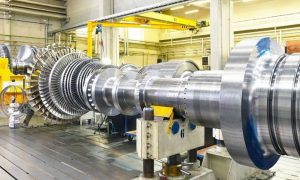Medical device cleanroom assembly stands as one of humanity’s most ambitious attempts to recreate the sterile conditions that exist in the deepest ocean trenches or the pristine environments of remote Antarctic valleys, where contamination remains virtually unknown. These remarkable spaces represent our species’ determination to control the microscopic world with the same precision that nature employs in maintaining the delicate balance of an undisturbed ecosystem.
Much like the intricate relationships that govern a coral reef or an old-growth forest, every component within these controlled environments must function in perfect harmony. The slightest disruption can cascade through the entire system, affecting not just manufacturing quality but ultimately the health and safety of countless patients who depend on the medical devices produced within these carefully orchestrated spaces.
The Architecture of Controlled Environments
The fundamental principles governing Medical Device cleanroom assembly mirror those found in nature’s most successful isolated ecosystems. Islands often develop unique characteristics because their separation from external influences allows for controlled development, and cleanrooms operate on similar principles of isolation and environmental control.
Within these spaces, air becomes the primary medium through which contamination travels, much like ocean currents distribute nutrients and organisms throughout marine ecosystems. Understanding airflow patterns requires the same systematic observation that ecologists use when studying animal migration routes or seed dispersal mechanisms.
The hierarchy of cleanliness classifications in medical device cleanroom assembly follows patterns reminiscent of ecological zonation. Just as mountain ecosystems change predictably with altitude, cleanroom environments become progressively more controlled as one moves from general manufacturing areas toward critical assembly zones.
Essential elements that define successful medical device cleanroom assembly include:
• Filtration systems that achieve 99.97% efficiency for particles 0.3 micrometers and larger
• Air velocity patterns maintaining 0.45 metres per second in unidirectional flow areas
• Surface materials that generate fewer than 100 particles per square metre per minute
• Personnel protocols that limit human-generated contamination to measurable levels
• Material transfer systems that prevent cross-contamination between zones
• Monitoring networks that detect environmental changes within minutes
Understanding Contamination Ecology
Every particle that enters a cleanroom environment follows predictable laws of physics, settling and moving according to principles that govern sediment transport in rivers or dust distribution in desert environments. The study of these microscopic migrations requires the same careful observation and documentation that characterises successful field biology.
Medical device cleanroom assembly must account for the fact that contamination sources behave like invasive species, capable of establishing themselves and proliferating if conditions permit. Personnel represent the primary vector for introducing foreign particles, much like migratory animals can introduce new species to previously isolated habitats.
The relationship between air pressure differentials and contamination control resembles the way atmospheric pressure gradients drive weather patterns. Higher pressure areas naturally push air toward lower pressure zones, creating invisible barriers that prevent contaminated air from entering sensitive areas.
Surface chemistry plays a role analogous to soil composition in terrestrial ecosystems. Different materials support different types of microbial growth, and the selection of appropriate surfaces requires understanding these relationships at a molecular level.
Dynamic Systems and Adaptive Management
Successful medical device cleanroom assembly recognises that these environments are dynamic systems requiring constant adjustment and maintenance. Like forest ecosystems that respond to seasonal changes whilst maintaining their essential characteristics, cleanrooms must adapt to varying production requirements whilst preserving critical environmental parameters.
Temperature and humidity control systems operate with the precision of physiological regulation in living organisms. Just as mammals maintain body temperature within narrow ranges despite external fluctuations, cleanroom environmental systems must respond to changing conditions whilst preserving optimal manufacturing environments.
The integration of multiple building systems during medical device cleanroom assembly requires coordination comparable to the complex interactions within natural communities. HVAC systems, electrical networks, water supplies, and waste management must function together seamlessly, each supporting the others whilst fulfilling their individual purposes.
Singapore’s Ecosystem Approach
Singapore has developed a distinctive approach to medical device cleanroom assembly that reflects the nation’s understanding of complex systems management. Drawing from experience in urban planning and environmental management, local expertise emphasises integrated solutions that account for multiple variables simultaneously.
“Singapore’s medical device cleanroom assembly practices demonstrate sophisticated understanding of system interdependencies,” observes a comprehensive industry study. “The integration of environmental controls with manufacturing processes creates facilities that function as complete ecosystems rather than collections of independent components.”
The tropical climate presents unique challenges that have driven innovation in medical device cleanroom assembly design. High humidity and temperature variations require adaptive strategies that mirror the way tropical organisms cope with environmental stress through flexible physiological responses.
Local engineering approaches emphasise resilience and redundancy, principles borrowed from ecosystem stability theory. Multiple backup systems and alternative pathways ensure that facilities can maintain critical functions even when individual components require maintenance or replacement.
Future Evolution and Adaptation
The continuing evolution of medical device cleanroom assembly reflects the same adaptive pressures that drive biological evolution. Regulatory requirements, technological advances, and changing manufacturing needs create selection pressures that favour certain design approaches whilst eliminating others.
Emerging technologies offer possibilities that parallel the sophisticated solutions found in natural systems. Biomimetic approaches to air distribution draw inspiration from the respiratory systems of highly efficient organisms, whilst advanced monitoring systems emulate the sensory networks that allow complex organisms to maintain homeostasis.
The integration of artificial intelligence and machine learning into facility management systems represents a step toward the kind of adaptive intelligence found in natural ecosystems, where multiple feedback mechanisms maintain stability through constant small adjustments rather than dramatic interventions.
Conclusion
The assembly of medical device cleanrooms represents humanity’s attempt to create artificial ecosystems optimised for a single purpose: the safe production of life-saving medical technologies. These spaces embody our species’ capacity for systematic thinking and precise execution, qualities that have enabled us to create environments more controlled than any found in nature. As technology continues advancing and our understanding deepens, the future promises even more sophisticated approaches to Medical device cleanroom assembly.






More Stories
Best Ways to Use Shipping Containers for Residential and Commercial Projects in Montana
Why Do Power Plants Still Use Steam Turbines?
Risk Management Strategies for Every Trader